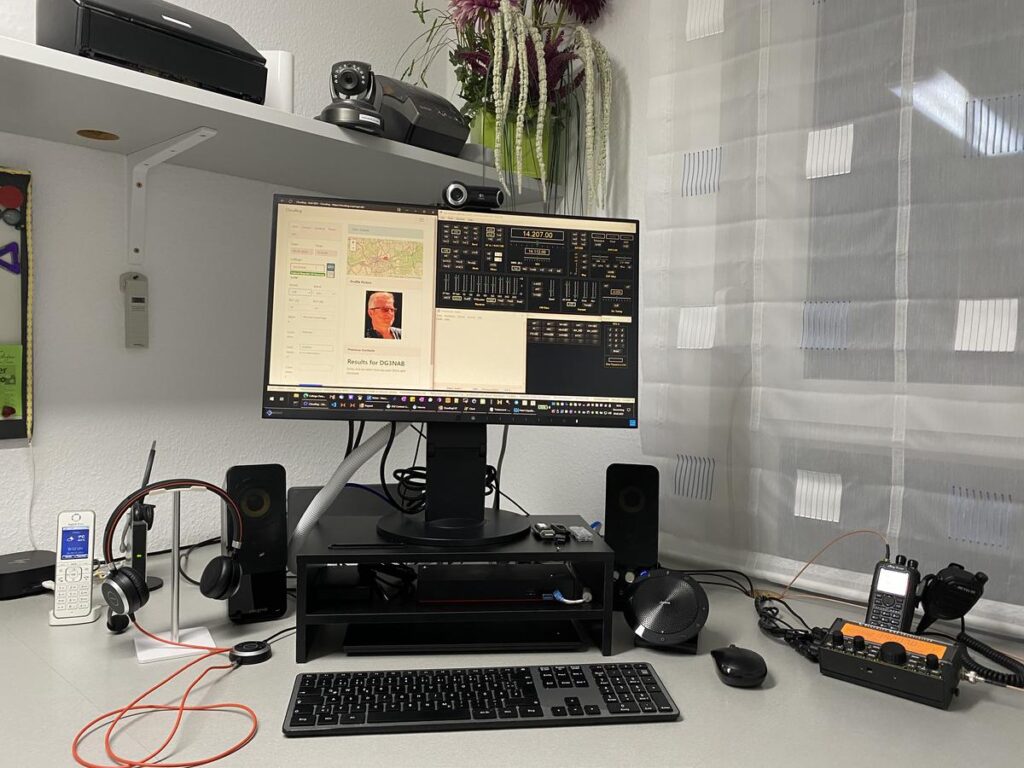In den vergangenen Wochen habe ich mich intensiv mit dem Thema Meshtastic beschäftigt – einem offenen Funksystem, das auf kostengünstiger Hardware basiert und es ermöglicht, auch ohne Mobilfunk oder Internet-Verbindung Nachrichten über ein selbstorganisierendes Mesh-Netzwerk auszutauschen.
Mittlerweile betreibe ich selbst mehrere Meshtastic-Knoten und konnte dabei eine Menge über Reichweite, Konfiguration und die richtige Platzierung der Geräte lernen.
Für meinen persönlichen Einsatz verwende ich unterschiedliche Gerätetypen:
- Einen SenseCAP Card Tracker T1000-E – begleitet mich unterwegs und hat für seine Größe und dafür, dass er keine externe Antenne besitzt, eine erstaunliche Empfangs- und Sendeleistung.
- Einen D5 Solar Node mit RAK4631 – hängt in meinem Garten und wird solar betrieben.
- Ein weiterer D5 Solar Node mit RAK4631 hängt auf einer Anhöhe oberhalb von Maintal – dieser ist notwendig, weil ich aus meinem Garten heraus kaum andere Mesh-Knoten erreichen konnte. Der erhöhte Standort hat die Verbindung im gesamten Gebiet deutlich verbessert und mir letztendlich auch den Zugang zu Mesh Hessen verschafft.
- Zusätzlich laufen bei mir zuhause noch zwei Heltec V3-Test-Knoten, mit denen ich neue Einstellungen und Firmwareversionen ausprobiere.
Inzwischen entsteht in meinem Umfeld langsam ein kleines, aber stetig wachsendes Meshtastic-Netzwerk. Mit jedem weiteren Knoten verbessern sich Abdeckung und Reichweite, und damit steigt auch der Nutzen für alle Teilnehmer.
Da die Konfiguration der Geräte einige Stolperfallen birgt – falsche Einstellungen können im schlimmsten Fall auch die Kommunikation anderer Knoten beeinträchtigen – habe ich eine ausführliche Anleitung zur Konfiguration von Meshtastic-Knoten erstellt.
Die Dokumentation ist unter diesem Link verfügbar (und wird immer wieder mal angepasst):
Konfiguration von Meshtastic-Knoten
Vielleicht hilft sie ja auch anderen, ihre eigenen Mesh-Knoten optimal einzurichten und ein stabiles, gut funktionierendes Netz aufzubauen.
Gerne stehe ich auch bei Fragen zu dem Thema zur Verfügung.. Ich bin auch in zwei Telegram-Kanälen aktiv:
https://t.me/meshtasticgermany
Und, wie oben schon angeführt, denkt bitte daran: Die Inbetriebnahme eines neuen Knotens, kann zu Störungen von anderen führen. Daher achtet unbedingt darauf, die Einstellungen entsprechend anzupassen. Das Mesh wird es Euch danken 🙂



